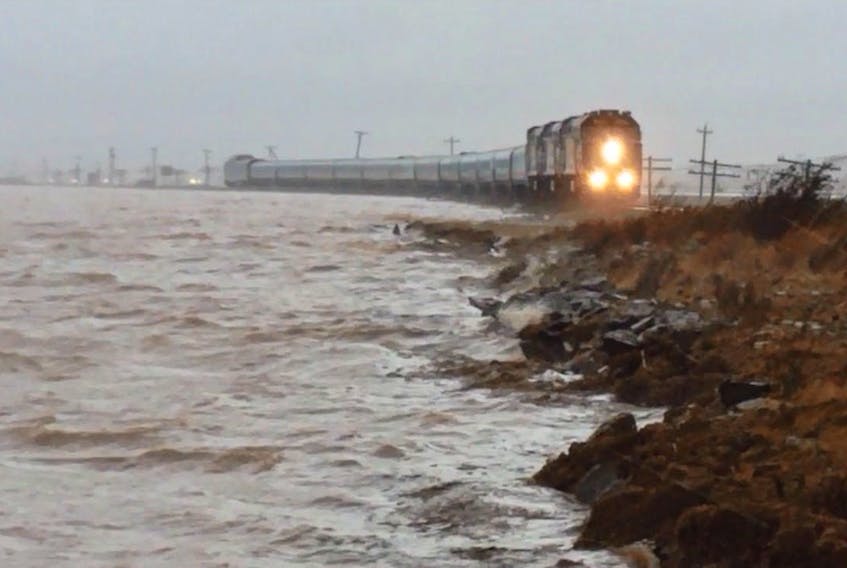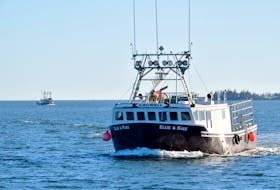AMHERST, N.S. — As much as the Saxby Gale remains a weather wonder 150 years after it occurred, meteorologists and EMO officials say it could happen again.
Only this time, we would be better warned and – hopefully – better prepared.
The Saxby Gale, predicted in December 1868 by British naval officer Lt. Stephen Saxby in a letter to the London Standard, occurred overnight Oct. 4-5, 1869, killing at least 37 people in Maine, Nova Scotia and New Brunswick. The two-metre storm surge breached dikes in the Minas Basin and the Tantramar Marsh between Amherst and Sackville, N.B.
“The Saxby Gale has gone down in weather legend. It was forecast as a storm through astrological forecasts. What Saxby was saying is if there’s a weather system that comes in on this date, it will be a storm of great proportion because of his knowledge of astronomy,” Saltwire Network meteorologist Cindy Day said. “Because it came up the Bay of Fundy during the spring tide, or the highest tide of the month after a new or full moon, it could easily happen again.”
The difference between now and then, she said, is there is technology available now that wasn’t available then.
“We can see these storms a week in advance as they start to churn. It doesn’t mean we’re so much more accurate when it comes to fine-tuning exactly where they’re going to make landfall. At least we can be prepared so much longer in advance with the technology we have,” she said.
Storms like the Saxby Gale depend on things like track and timing. The track of the storm and its timing were like a perfect storm in when it arrived - at the height of the spring tide – and its track being to the west, sending the storm surge up the bay.
“A big storm is like baking a cake, you have to have all the right ingredients,” she said. “Everything was set up just perfectly for that and it’s not without reason for it to happen again because all it takes is the proper timing and the right track.”
Day said with warming ocean temperatures, there’s more potential for more tropical storms to reach the Maritimes and they could remain more severe longer. With the right track and timing, she said, it could be a repeat of 1869.
Bob Robichaud from the Canadian Hurricane Centre said the Saxby Gale was essentially a tropical storm that formed off the southeastern United States, transitioned to a post-tropical tropical storm – like Dorian did a month ago – and tracked through northern New England and into northern New Brunswick.
“That put most of the Maritimes on the windy side of the storm,” Robichaud said. “This thing was a powerful storm and a large storm because to push that amount of water into the Bay of Fundy would require quite a large storm, like Sandy was in 2012. It pushed this amount of water into the bay at the same time as the spring high tide.”
He said there was likely wind damage, but it was the storm surge that was the biggest impact.
Robichaud said EMO officials have done exercises reprising the Saxby Gale in modern times and, like Day, he says there’s the potential for another Saxby Gale, but there’s no telling when it will happen.
If Sandy, which hit New Jersey in October 2012, had followed the track of the Saxby Gale the impact could have been catastrophic.
Fortunately, he added, there’s an excellent working relationship between meteorlogists at the Canadian Hurricane Centre in Bedford and EMO officials around the region.
He said it’s hard to say whether Dorian could have been another Saxby because there isn’t any scientific data on the storm in 1869 to compare to the most recent storm.
For Mike Johnson, Cumberland County’s EMO co-ordinator, storms like the Saxby Gale and hurricanes Juan and Dorian are only legendary because of the consequences.
“If we didn’t have the consequences they wouldn’t be legendary,” he said. “The single biggest difference between today and then is we would have warning. We would know it’s coming and people could take steps to mitigate. Having said that, even with Dorian we had lots of warning and people were advised to take steps they didn’t understand what the impact was going to be.”
Johnson said today’s Nova Scotia is much better prepared because of improved technology, and communications.
“They didn’t have satellites in 1869, they didn’t have radio, they didn’t have telephones,” Johnson said. “We have the ability today to know what’s coming when this storm develops in the Caribbean and begins to make it track. We can look at its consequences as it makes its way, as we did with Dorian.”
If there were no satellite technology or communication when Dorian hit, Johnson said, there would have been the same damage, but there would’ve been fatalities since people would’ve been out going about their business without knowing what was coming.
He said people who experienced Juan and, more recently, Dorian will make decisions based on their experiences. However, as time goes on their memories of what happened fails as does their level of preparedness. That’s what made Juan so destructive.
For Johnson, it’s essential for dikelands to be adjusted to account for rising sea levels and warming ocean temperatures that could result in more frequent and severe tropical storms.









